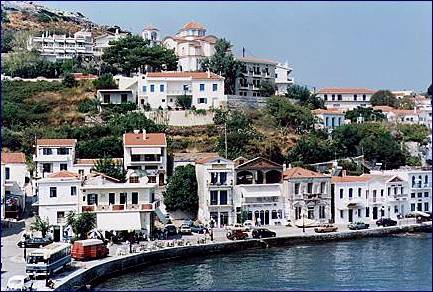
First thing this morning I spent a little time in the vegetable garden, hand watering the areas not served by drip lines. Usually Andreas does this but as he is in Greece for two weeks the job falls to me. I'm actually enjoying getting out there in the early hours of the day. This morning I brought in some squash, several cucumbers, and another big bowl of tomatoes, in addition to my favorite summer morning treat, squash blossoms.
Breakfast today was an omelet made with the blossoms, some herbs from the garden and a couple of local eggs. It was my intention to have our own chickens by now, but the coop-construction plans got sidetracked this summer in favor of a bedroom redecoration and a few other home improvement projects. We still hope to have it done before next spring, as we've promised Alekka some baby chicks. Fortunately local eggs aren't hard to come by.
After breakfast Alekka and I headed out to Ashland to shop at the co-op and to check out the Eat Local kick-off celebration in front of the store. They had a bluegrass band and some purist-friendly food samples. The Eat Local organizers had a table and I made my participation official by signing up. They are sticking to the standards, these THRIVE folks, and I guess that's a good thing - although it means I don't get to call myself a Purist. Coffee drinkers may as well turn in their badges right now. Oh well, been there, done that. So this year I am an Idealist.
The bar is pretty low for Idealists: all you have to do is eat one meal a day that is all-local. That's too easy. I intend to keep to my own Powdermilk Biscuit standard ("pure... mostly"; also "tasty" but not necessarily "expeditious"). However, after checking out the bulk food section at the co-op I think I will write myself a couple of more exceptions. I thought I remembered that Black Ranch wheat (sold at the co-op) had a white flour but it seems they don't. So I'm going to allow myself my usual white flour from Bob's Red Mill, located about 30 miles outside the 200-mile zone; the wheat itself is grown mainly in Idaho. And I'm going to use that Napa Valley red wine vinegar our son brought up last year. It will make a better vinaigrette than lemon juice does.
So, you might ask, why can't I manage without flour? After all, it's only a week. This is why - it's to make the bread that goes so well with with the amazing tomato stuff. You lightly toast a slice of rustic bread, spread it with with goat cheese (made locally by Siskiyou Goat Dairy or Mama Terra, from Ashland Food Co-op) and top it with these roasted tomatoes dripping in garlicky olive oil. Last night I wasn't allowing myself the bread because the wheat wasn't local, so I put some of the tomatoes on my steak. That was good, too.
One day last summer Nik ate an entire batch of these tomatoes in a day, so last night I secured the bowl from midnight snackers with rubber bands and a "do not eat" sign to make sure there would be some left for tonight. By the way, when the tomatoes are gone, don't throw away the oil - use it to make dressing, to cook eggs in, or for dipping more bread.
Pomodori al Forno
1 C olive oil, divided
2 lbs. plum tomatoes, halved lengthwise, seeded
1 1/2 t dried oregano
3/4 t sugar *
1/2 t salt
1 or 2 garlic cloves, minced
2 t minced Italian parsley
*Eat Local people - it will be fine if you omit the sugar
Preheat oven to 250 degrees. Pour 1/2 C oil into a 13x9 glass baking dish. Arrange tomatoes in the dish, cut side up. Drizzle with remaining 1/2 C oil. Sprinkle with oregano, salt, and sugar. Bake 1 hour. Use tongs to turn the tomatoes over. Bake another hour. Turn tomatoes again. Bake until deep red and very tender, about another 15 to 45 minutes.
Layer tomatoes in a bowl or glass loaf pan, sprinkling garlic and parsley over each layer. Pour the liquid from the baking dish into a large measuring cup. Pour just the oil that rises to the top of the measuring cup (not the tomato liquid) over the tomatoes until they are covered (if there is not enough baking oil, use additional olive oil). Let stand at room temperature 2 hours. Serve with goat cheese and toasted bread slices.









